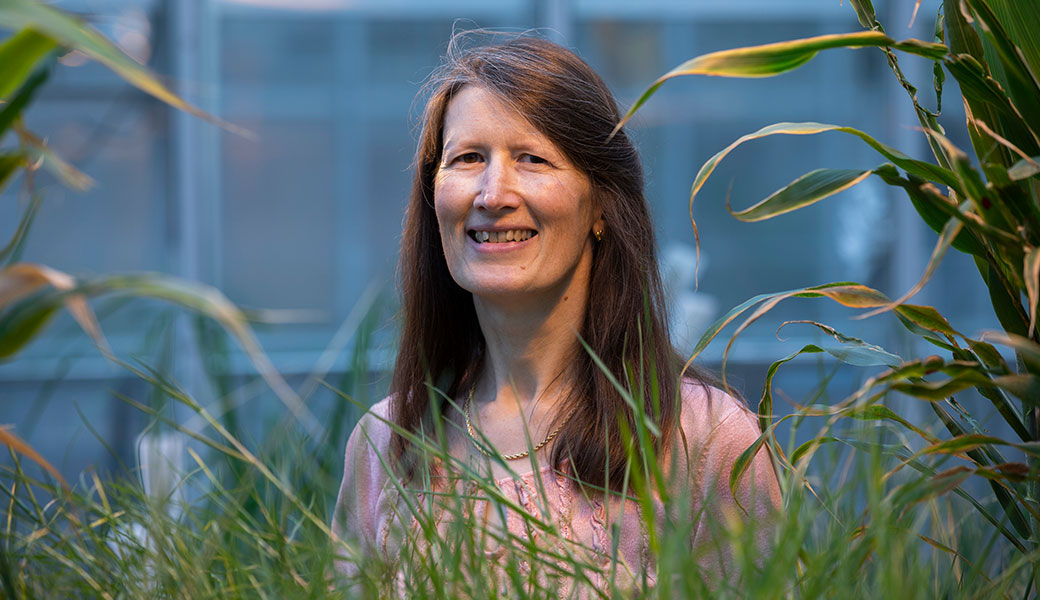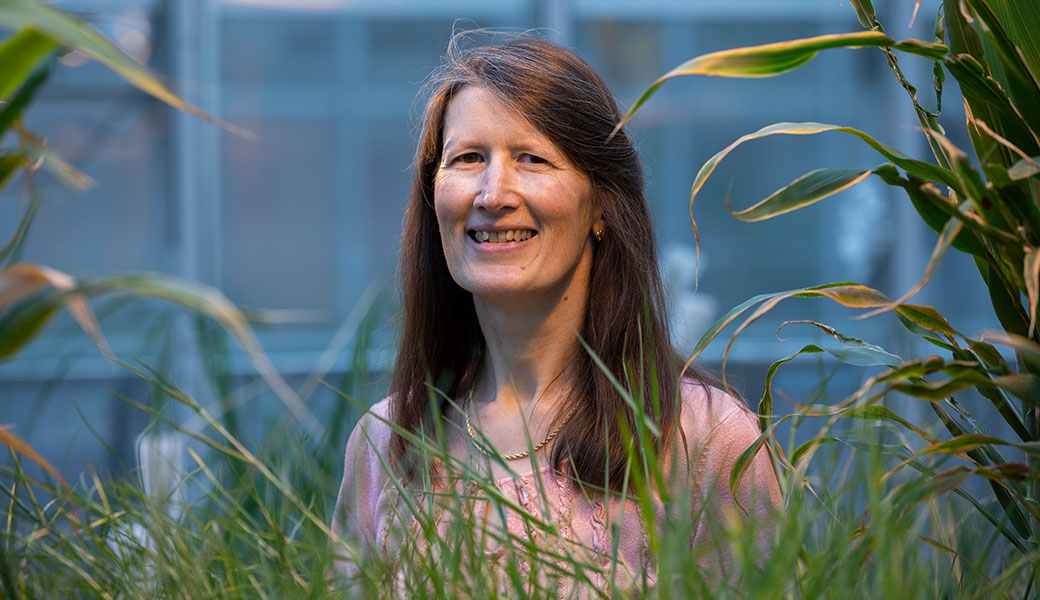As reported Jan. 27 in the journal Nature, a nationwide team that includes University of Georgia faculty member Katrien Devos has produced a high-quality reference sequence of the complex switchgrass genome, marking a critical step for a plant species that has long been studied for its potential application in the production of biofuels.
The team was led by researchers at the University of Texas at Austin, the HudsonAlpha Institute for Biotechnology and the U.S. Department of Energy Joint Genome Institute, a DOE Office of Science user facility located at Lawrence Berkeley National Laboratory in California. Building off this work, researchers at all four DOE Bioenergy Research Centers — the Great Lakes Bioenergy Research Center, the Center for Bioenergy Innovation, the Center for Advanced Bioenergy & Bioproducts Institute and the Joint BioEnergy Institute — are exploring genetic improvements to switchgrass to customize the crop for additional end products.
“Having a high-quality reference genome is essential to quickly make genetic advances in a crop,” said Devos, Distinguished Research Professor with joint appointments in crop and soil sciences in the UGA College of Agricultural and Environmental Sciences and plant biology in the UGA Franklin College of Arts and Sciences. “Understanding the genetics of latitudinal adaptation is key to being able to breed switchgrass varieties suitable for cultivation across broader areas. But the importance of the switchgrass assembly goes far beyond the current study — we now have the tools to also look at other traits affecting the yield and composition of switchgrass biomass for bioenergy production.”
“To accelerate breeding for bioenergy, we need to make connections between the plant’s traits and genetic diversity,” said John Lovell, an evolutionary biologist at HudsonAlpha and first author of the study. “For that, it’s necessary to have the plant’s genome as a reference.”
A combination of field data and genetic information has allowed the research team to associate climate adaptations with switchgrass biology, information that could be useful toward the DOE’s interest in harnessing the crop as a versatile biomass feedstock candidate for producing sustainable alternative fuels.
Switchgrass has a large polyploid genome, which means most genes are found as multiple copies across the chromosomes. “In the past, we needed model systems to test genetic hypotheses in species with large and complex genomes,” said Lovell. “However, new sequencing technologies have allowed us to build the necessary genome resources to directly test for genes involved in biomass yield and climate adaptation in switchgrass, despite its physical size and genome complexity.”
Work on the switchgrass genome sequence started more than a decade ago. As sequencing technologies advanced, assembly and annotation of the genome sequence improved in parallel. For example, the current version of the genome is assembled into sequences of 5.5 million basepair (bp) in length, while the previous version had an average of 25,000 bp pieces. That’s the difference between assembling a 10,000-piece puzzle and doing the same puzzle with just 50 pieces.
One of the team’s findings is that the performance of switchgrass depended on the origin or collection location of the individual switchgrass plants. They were able to identify many regions in the switchgrass genome that are associated with genetic differences that lead to productivity in different environments.
For example, many plants collected from native habitats in Texas and other southern locales did not survive the cold winter of 2019 in South Dakota. Conversely, upper Midwest native switchgrass plants performed poorly in Texas. This reciprocal, home site advantage is direct evidence of climatic adaptation. The team’s database of genes that underlie adaptation to climate provides breeders with a strong foundation to improve crop productivity under specific climates.
The high quality reference genome sequence of switchgrass is available on the JGI plant data portal Phytozome. This version can help breeders identify genomic regions of interest and directly introduce these features into new crop varieties.
“The quality of the assembly achieved in switchgrass, which is genetically very complex, is impressive, and it shows what can be achieved through the dedication and hard work of a highly collaborative scientific community,” Devos said.
Two senior research associates in Devos’ lab, Tom Pendergast and Peng Qi, also participated in this project. The full team on the Nature paper included researchers from UGA; University of California, Berkeley; Rutgers University; U.S. Department of Agriculture-Agricultural Research Service; Arizona Genomics Institute; Clemson University; Marshall University; Jawaharlal Nehru University (India); Noble Research Institute; University of Nebraska, Lincoln; South Dakota State University; University of Missouri; Argonne National Laboratory; USDA-Natural Resources Conservation Service; Texas A&M University; UC Davis; Oklahoma State University; University of Oklahoma; and Washington State University.
For information about the CAES Institute of Plant Breeding, Genetics and Genomics, visit plantbreeding.caes.uga.edu.








